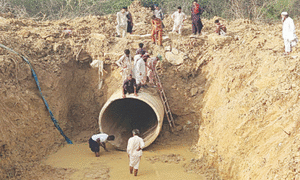WHAT will the world look like about a decade from now? Given that geopolitics, geo-economics, and technologies are evolving rapidly, the future is uncertain. However, there are trends that give us a clue regarding the direction of global geopolitics. Today, we are transitioning from a world order to disorder: major power rivalries are intensifying, global military expenditure is rising steeply, unilateralism is ascendant while multilateralism is in decline, and xenophobia is embedding itself in almost every country.
Four theatres of global contestation are contributing to the global disarray: Indo-Pacific (US-China competition), Europe (Russia-Ukraine war), Middle East (Palestine conflict, Israel-Iran tensions), and the Indian Ocean, where major powers including the US, UK, France, Australia, China and India want to enhance their presence. American maritime strategist Alfred Mahan had rightly predicted in the 19th century that the future of the 21st century would depend on whoever dominated the Indian Ocean.
Shifting alliances are being formed, essentially along three broad categories: the US, Europe and Australia have an informal broad alignment against Russia, China, and Iran. For some countries, such as India, Saudi Arabia, Turkey, Pakistan, and other middle powers, the preferred option is to exercise strategic autonomy. Across these two broad categories, multi-alignments are emerging to pursue common interests, such as BRICS (Brazil, Russia, India, China and South Africa), which has expanded to include other countries, including Iran and Saudi Arabia; QUAD, a platform created by the US, Australia, India and Japan to contain China; and I2U2, which has brought together India, Israel, the US, and UAE for economic cooperation, but has been halted, for now, by the Gaza war. For its part, China is engaged with over 100 countries in the Belt and Road Initiative (BRI) and six economic corridors, including CPEC.
These shifting alliances will be affected by six cross-cutting trends: (i) emerging technologies, such as AI platforms, multi-role drones, big data, and semiconductors, which are currently at the centre of the US-China tech war; (ii) climate change, which can spell havoc for countries with low fiscal space through extreme weather and food insecurity; (iii) de-dollarisation, an option many countries have begun to explore; (iv) rare earth elements, which are required for advancing technologies — such as smartphones, digital cameras, semiconductors, etc — and that are evoking stiff competition between China and the US, Europe, and Japan; (v) non-traditional security threats, including energy politics, cyberwarfare, disinformation campaigns and lawfare; and (vi) resurgent terrorism as concerted international response wanes.
The focus of global attention will remain on Asia.
Global contestations, shifting alliances, and the six trends that will shape the world in the coming decade will all play out in the high-risk areas of potential global conflict, including the South China Sea, Ukraine, Middle East, Afghanistan, and Kashmir. The probable nature of conflict will be hybrid, with countries using every tool of national power at their disposal to achieve their goals, including kinetic options (military strikes, use of proxies), economic instruments (sanctions, lucrative aid packages, coercion through the international monetary system) and information tools (propaganda, media, entertainment industry).
Consequently, power potential will also change. The US is a waning power, but the instruments of its national power are largely intact and can sustain it through the next decade as a leading superpower. It is also taking steps to recover ground lost to China in high-tech industry and the manufacturing sector. China is a rising power, and is interested in continuing its peaceful rise to become fully industrialised, for which it will resist involvement in major kinetic conflicts. Russia is seeking to revive its lost glory, but its energies are likely to be consumed by the conflict in Europe. India is also a rising economic power, though its geopolitical profile will be constrained by ideological politics, the North-South divide, restive minorities, and agitated farmers.
The UN would remain sidelined in matters of peace and security, but stay relevant for sustainable development and climate change. The OIC is not likely to dent the future in any major way. Asean will continue as a success story of regional integration. Europe is a resilient continent but the focus of global attention will remain on Asia in the coming decade.
The world of 2035 appears to be even more fragmented and polarised than it is today. Only countries exhibiting economic resilience and societal harmony will stand a chance against the mighty winds of change.
The writer is a former foreign secretary and chairman Sanober Institute Islamabad.
Published in Dawn, April 14th, 2024












































